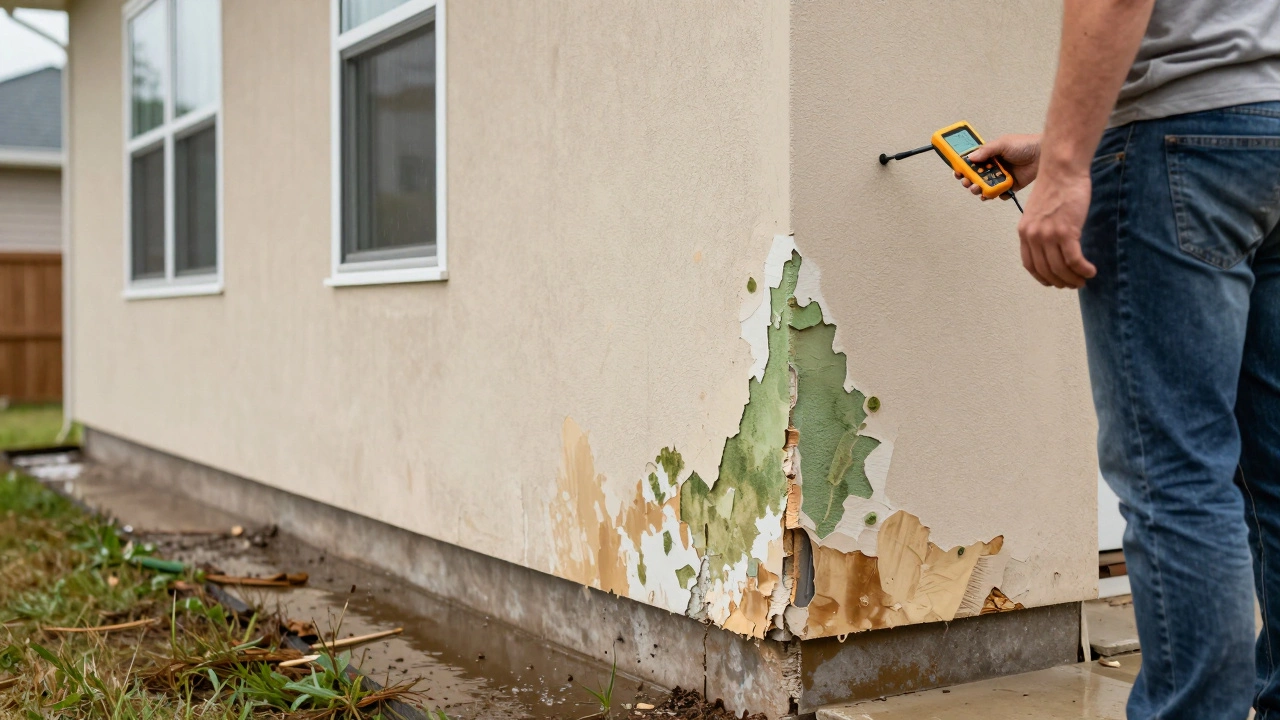Ever walk into a room and feel like something’s off-even though everything looks clean and modern? Sometimes, the culprit isn’t the furniture or the paint. It’s the curtains. Or maybe, the lack of them.
More people in Melbourne, Sydney, and even smaller towns are ditching curtains altogether. Not because they’re lazy, but because they’ve seen what happens when light flows freely and window frames become part of the design. But is this trend actually better? Or are you just trading one problem for another?
What Happens When You Remove Curtains
Take a bedroom with heavy blackout curtains. You pull them back in the morning, and the room still feels dull. Why? Because the fabric absorbed the light, trapped dust, and made the window feel like a hole in the wall. Now remove them. Suddenly, the window frame becomes a picture frame. The glass, the sill, even the outside tree-each becomes part of the interior.
Rooms without curtains don’t just look cleaner. They feel bigger. Light bounces off walls instead of being swallowed by fabric. In small apartments, this can make a huge difference. A 2023 study by the Australian Interior Design Institute found that rooms with unobstructed windows were perceived as 15% larger by occupants, even when square footage was identical.
But it’s not just about size. It’s about rhythm. Natural light changes through the day. Without curtains, you see it move. Morning gold on the floor. Midday glare on the kitchen counter. Evening purple shadows stretching across the hallway. That’s not a flaw-it’s life.
When No Curtains Work Best
Not every room should go curtain-free. But some absolutely thrive without them.
- Living rooms with great views: If you’ve got trees, a garden, or a city skyline, why hide it? A clean window frame and floor-to-ceiling glass become the art.
- Modern kitchens: Open shelving, minimalist appliances, and uncluttered windows create a calm, airy feel. Curtains here feel outdated.
- Home offices: Natural light boosts focus. Studies show workers in sunlit rooms report 18% higher productivity. No curtains means more consistent light without the hassle of adjusting blinds.
- Bathrooms with privacy glass: Frosted or textured windows let light in but block views. Add a curtain here, and you’re just adding moisture-trapping fabric.
These spaces don’t need curtains because their design already handles the core needs: light, view, and privacy-without fabric.
The Privacy Problem (And How to Solve It)
The biggest fear? People staring in. And it’s real. If your windows face a neighbor’s balcony, a busy street, or a shared courtyard, going curtain-free can feel risky.
But privacy doesn’t require fabric. Here’s what works instead:
- Static cling films: Frosted or patterned films cost under $30 per window. They blur outlines but let in full light. Easy to install, no tools needed.
- Roller shades in neutral tones: Blackout? No. But a thin linen-style shade in beige or grey? That’s different. It drops down only when you need it-like at night or for naps.
- Interior shutters: Wooden or vinyl slats let you control light and view without covering the whole window. They’re durable, easy to clean, and look sharp in modern homes.
- Plant placement: A tall potted fern or snake plant outside a window creates a natural screen. Bonus: it improves air quality.
These aren’t curtains. They’re solutions. And they don’t collect dust like fabric does.

What You Lose Without Curtains
Let’s be honest-curtains do some things well.
They block glare during afternoon TV time. They muffle street noise. They add softness to hard rooms. And yes, they give you total control over privacy.
But here’s the catch: those benefits come with trade-offs. Curtains fade in sunlight. They trap allergens. They need washing every few months. And in a room with high ceilings, they can make the space feel smaller, not bigger.
Think about it this way: if you’re using curtains just to hide a bad view or to feel safe, you’re using them as a band-aid. Fix the view with film or plants. Fix the noise with double-glazed windows. Fix the glare with a smart shade. Then ask yourself: do you really need the fabric at all?
Style and Trends: Are Curtains Out of Fashion?
Not every style is moving away from curtains. Traditional, rustic, or cozy homes still benefit from drapes. Velvet in a bedroom? Still luxurious. Linen panels in a farmhouse kitchen? Still warm.
But if your home leans modern, Scandinavian, Japandi, or minimalist-curtains often feel like an afterthought. They break the clean lines. They add visual weight. They compete with the architecture.
Look at homes featured in Architectural Digest or Inside Out over the last two years. The most photographed interiors? They have windows that breathe. No curtains. No fuss. Just light, glass, and space.
That’s not a coincidence. It’s a design principle: let the architecture speak.

Real-Life Examples: Before and After
A client in Carlton, Melbourne, had a small living room with heavy navy curtains. The room felt dark, dated, and cramped. We removed the curtains, replaced the single-pane windows with double-glazed ones, and added a thin, motorized linen shade that only lowered at night.
Result? The room felt 30% brighter. The view of the gum tree outside became part of the decor. The client said, “I didn’t realize how much I was missing until I saw it without fabric.”
Another example: a Sydney studio apartment with three windows facing a busy alley. They used frosted film on the lower half and left the top clear. Now, they get morning light, privacy from street level, and the illusion of height.
These aren’t gimmicks. They’re thoughtful adjustments based on real needs.
When You Should Keep Curtains
There’s no rule that says all windows must be bare. Curtains still have their place.
- Bedrooms with poor insulation: Heavy drapes help keep heat in during winter.
- Children’s rooms: Blackout curtains help with sleep schedules.
- Windows with no architectural detail: If your window frame is cheap plastic or mismatched, a curtain can soften the look.
- Rooms with extreme glare: If your south-facing window turns the sofa into a solar oven, a sheer curtain diffuses the light without blocking it.
It’s not about removing curtains for the sake of it. It’s about asking: does this window need covering, or is it already doing its job?
Final Thought: It’s Not About Curtains-It’s About Intention
Rooms don’t look better without curtains because curtains are bad. They look better when every element serves a purpose. When light isn’t fighting fabric. When privacy isn’t an afterthought. When the window isn’t hidden-it’s highlighted.
Try this: for one week, leave your curtains open. Just open them. Don’t replace them. Don’t add anything. Just see how the light moves. Notice how the room changes with the hour. See if you miss the fabric-or if you start to appreciate the frame.
If you feel more calm, more connected to the outside, more awake in the morning-then maybe your room didn’t need curtains at all.
Do rooms without curtains look cold or sterile?
Not if you balance them with texture. A wool rug, linen cushions, wooden shelves, or a ceramic lamp add warmth. The key is layering materials, not adding fabric to the windows. A bare window doesn’t mean a bare room.
Can I still have blackout curtains if I want privacy at night?
Yes-but don’t leave them up all day. Use them only when needed. Install a track that lets you pull them closed at bedtime and tuck them neatly to the side during the day. This keeps the room bright and open most of the time, while still giving you total darkness when you need it.
Are there any downsides to removing curtains in rental properties?
Only if your lease requires window coverings. Most don’t. But if you’re unsure, use removable solutions like static cling film or adhesive roller shades. They don’t damage walls and can be taken down easily when you move.
Do rooms without curtains increase energy bills?
It depends. In winter, windows lose heat. But modern double-glazed windows reduce that loss by up to 80%. In summer, open windows let in heat-but so do thin curtains. The real energy saver is using external shading like trees or awnings, not indoor fabric.
What’s the best alternative to curtains for a living room?
Interior shutters or motorized linen roller shades. Shutters give you full control over light and privacy without covering the entire window. Linen shades are soft, quiet, and let diffused light in. Both look clean and modern, and they’re easier to clean than fabric curtains.






